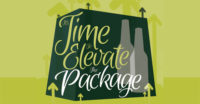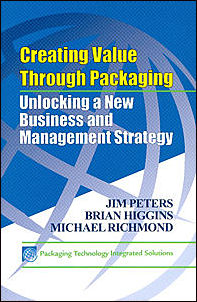It's Hip To Contradict
It’s Hip To Contradict
by Robyn Waters
Navigating the paradoxes of the packaging landscape.
Contradictions are everywhere. These days, we wear Old Navy with new Gucci and couture Chanel with vintage denim. Our new homes are filled with flea market finds, and we show off our Michael Graves teakettles from Target on Viking stoves in gourmet kitchens that have cabinets from IKEA. We buy ketchup in upside down bottles (mayonnaise and mustard, too), wine in a box, and find a five-minute vacation in a cup of Starbucks coffee.
When I began my career in the late 1970s, a trend was defined as something that everyone wanted at the same time. Fashion and business magazines proclaimed what was “in” and what was “out”. Back then, it was fairly easy for companies to determine the next big trend, and ride it all the way to the bank.
But today, a thousand different “next big things” have replaced the one next big thing. For every trend, there’s an equally valid countertrend at the opposite end of the spectrum. It’s clear that a cookie cutter approach no longer works: To discover what consumers really want, companies need to ask what’s important, not just what’s next.
My new book, The Hummer and the Mini: Navigating the Contradictions of the New Trend Landscape, explores the nature of trend/countertrend—the paradox that dominates our trend landscape. In today’s world, opposites not only co-exist, they thrive.
Target is a great example of that. Not that many years ago, there was a huge shopping divide between high-end department stores and low-end discounters. The two retail venues were worlds apart in terms of assortment, price points, presentation and customer profiles. That’s not the case any more.
Target successfully reframed the discount world with its brand promise: Expect More, Pay Less. Its customers have come to expect more trend, better design, and differentiated product than they would find at other discounters, and they love that they will pay far less for it than they would for the same items at Gap or Crate & Barrel. No wonder that, on any given day, you will find as many Mercedes and BMWs in the Target parking lot as you will Fords and Chevys. By effectively navigating the contradictions, Target has successfully positioned itself as the upscale discounter.
Michael Silverstein and Neil Fiske examine the contradictory nature of today’s consumer in their book, Trading Up. Their profile of a woman who wears Prada shoes, drives a Mercedes, and goes to Costco to stock up on bulk paper goods points out the schizophrenic nature of shoppers today. When you really think about it, we all have a bit of that within us. If you’ve ever gone out to lunch and ordered a salad with dressing on the side, passed on the bread basket, requested water to drink, and then ordered a slice of chocolate cake for dessert, you’ve experienced your own version of schizophrenia.
What I find so fascinating about paradox is the way it illuminates truth. A paradox captures the essence of what’s going on in the world while, at the same time, it cautions that things aren’t always as they first appear. That’s a great lesson for designers and marketers, and it works as well for retailers as it does for the advertising world.
Our world is filled with paradox. Psychologists tell us that there are two basic human desires within each and every one of us: The first is a desire to fit in, to belong to something, such as a family, an organization, or a club. At the opposite end of the spectrum is the second basic desire: We all want to be perceived as individuals, as unique human beings, unlike any other on the planet.
Margaret Meade summed it up when she said: “We should always remember that we are absolutely unique, just like everyone else.”
Let’s take a look at the contradictions we face in today’s marketplace, and see if we can discover any packaging opportunities in the world of paradox.
Everything old is new again
The old adage “everything old is new again” has never been truer. It seems that the more technologically advanced our world becomes, the more many of us are interested, intrigued, and enticed by things reminiscent of a slower, simpler and saner past. Some products that fall into this trend are the Mini Cooper, the Vespa scooter, vintage t-shirts and sneakers, and retro sodas and cocktails.
How would this trend apply in packaging? Consider Prada. When the luxury brand launched its first fragrance, it chose a modern, rectangular clear glass bottle with an old-fashioned bulb spray atomizer, reminiscent of fragrances from the 1930s. The contrast of the modern and vintage elements suggested to the Prada woman that she could be ultra modern and nostalgically romantic in the same moment.
When P&G relaunched its Old Spice brand, the iconic white cone-shaped bottle disappeared at sea, and a new sleek, red tube (still with a hint of the nautical) took its place. The new Old Spice was aimed at budding metrosexuals, and quickly became the best selling deodorant for teen boys in the market.
Mass customization
But not everything from the past holds up today. When Henry Ford introduced our modern industrial world to the cost and time savings of mass production, he was hailed as bringing forth a panacea of efficiency and a way for everyone to have access to the good life by owning a Model T. However, today’s consumers don’t just want what the Joneses have. They want to express their personal style, and they want a say in how that’s done.
In our new age, mass customization allows a product created for the masses to be personalized to the point where each consumer feels it’s all about him or her. Most teenagers now have a personalized ring tone for their cell phone. Build-a-Bear has found the honey pot by creating an interactive shopping experience that lets children customize their own teddy bears. And Starbucks gives you 19,000 different ways to order your drink.
Mass customization can put the customer in charge of packaging too. Jones Soda uses the internet to connect on a personal level with its customers by letting them scan their own photos, select a favorite flavor, and create a custom label for a case of soda that’s delivered right to their door. General Mills lets you put your own hero on a box of Wheaties. And M&Ms allows you to customize your message and create your own M&M assortment by choosing from an expanded range of fashion colors online. It costs a bit more than the conventional products, but many feel it’s worth the premium.
Luxurious commodities
Even items once considered commodities have delved into paradox. A commodity is a mass-produced, unspecialized product that is useful. A luxury is something that adds pleasure, but isn’t absolutely necessary. Surely, then, a “luxurious commodity” qualifies as an enchanting paradox.
In my years of trend tracking and product development, I’ve been most fascinated by companies that have found a way to reinvent an everyday commodity item in such a way that it brings extraordinary pleasure or meaning to our lives.
For instance, Whirlpool turned the ultimate “white box commodity” (a washer and dryer) into a well-designed status symbol that some owners like to call “the Ferrari” of washing machines. Godiva has turned a cup of hot chocolate into a steamy gourmet treat—the brand’s Hot Chocolixir is haute, indeed. And a Michael Graves-designed toilet brush landed a full page spread in Time magazine a few years ago as the ultimate example of “cheap chic”.
In the world of packaging, a great example of a luxurious commodity is the new oval-shaped Kleenex box—a curvaceous sexy package featuring upscale designs at a premium price. Another one is GoSmile, a portable, luxurious tooth-whitening kit that, thanks to package design, has enabled the oral care brand to be perceived as a prestige beauty product. In fact, GoSmile has sparked the creation of a new category of beauty products at Sephora called ‘smile’.
Less is more
There’s also a contradiction of size in the marketplace. It’s no secret that Americans are infatuated with BIG. We love to drive big cars, live in big homes, eat big portions, shop at big box stores and bigger-then-ever malls. We are a “Supersize me” nation, trained to believe that more is better. In today’s world of excess, though, it’s refreshing to find that, sometimes, mini is mighty.
Newspapers that once gave you all the news that’s fit to print in broadsheet size have now shrunk to tabloid size. Sarah Susanka’s “Not So Big House” shows homeowners how to downsize their homes without downsizing their dreams. Consumer electronics manufacturers are realizing that less complexity can lead to bigger sales: As a backlash to “feature creep”, Vodaphone offers devices that are simpler and more intuitive. Simplexity rules!
Today, that less-is-more concept has transitioned from an “inconvenient truth” to a fact of life. Green is the new black, and eco chic rules. Forward-thinking companies like Aveda and Origins converted to post-consumer recyclable (PCR) materials years ago. And, recently, Wal-Mart announced an initiative to reduce packaging materials by five percent over the next few years, a move that will save many trees and will significantly reduce what’s thrown into our landfills.
Another interesting approach to “less is more” in packaging is Wishbone’s Salad Spritzers. For consumers that want more flavor but less calories, Wishbone’s new salad dressing packaging allows users to control how many calories they take in. The brand’s innovative packaging makes it easy: one spritz equals one calorie.
Extreme relaxation
Our lifestyles are also a model of contradiction. We work hard. We play hard. Have you ever wondered what it would be like to “relax hard”? On average, Americans work 350 hours more per year than do our peers in Western Europe. We put in longer hours with less vacation than citizens of any other industrialized country.
Bottom line, as a society we’re overworked, time-starved, and on edge. We multi-task—not so we can get more done and ultimately relax, but so we can do even more. The paradox of extreme relaxation is that we ultimately find more energy and efficiency in slowing down than we do in going faster.
Packaging can pack a powerful punch in such an on-the-go, time-pressed world. Many food companies have found innovative ways to bring a greater level of convenience to their customers through packaging innovation. Campbell’s designed a microwaveable go-cup for its Soup at Hand line, and Yoplait and General Mills put yogurt in a tube, transforming a “good for you” product into a “fun for kids” and “easy for mom” food phenomenon.
Healthy indulgence
Our 24/7 lifestyles are also taking a toll on our health. Our fast-paced lives make food on the run a necessity, and, at the same time, our packed schedules allow for very little exercise time. As a result, we often cope with stress by looking for small indulgences and little pleasures that make our hectic lives seem more bearable.
We are a nation suffering from nutritional schizophrenia. For many, a diet means ordering a hamburger, fries, and diet soda. I have my own form of nutritional schizophrenia. I order a tall skim hot chocolate when I go to Starbucks, but I also request the whipped cream. Doesn’t seem to phase the baristas in the least.
A recent best-selling book, French Women Don’t Get Fat, by Mireille Guiliana, addresses this phenomenon. It’s been called a diet book that doesn’t involve dieting. The author advocates eating in moderation, but eating three meals a day. The French Food Paradox means you get to eat everything, including desert, and have that glass of wine. Just make sure you avoid processed foods and snacks, and oh yes, be sure and walk everywhere.
Today, you can snack on all natural, organic Cheetos, a Health by Chocolate candy bar, or indulge in a healthy martini made with 3 Vodka—the only vodka made from soy. 3 Vodka comes in an eye-catching bottle with an enlarged red numeral 3, which is topped with a black plastic cap that double as a half-shot measuring device. Now that’s what I call a healthy buzz, or a spirited paradox!
Embrace the paradox
There is no shortage of examples to demonstrate that today’s world is full of contradictions. There are no easy answers, nor is there only one right way to do something. It’s simply time to embrace the paradoxes that face us and reframe our approach to how we do business.
F. Scott Fitzgerald said: “The test of a first class mind is the ability to hold two opposing ideas in the head at the same time, and still be able to function.” That’s an imperative success strategy for today’s contradictory marketplace.
When you explore them with an open mind, paradoxes can help you read between the lines, re-examine your approach to packaging, and make the most of the inconsistencies that are inevitable.
The author, Robyn Waters, is known as the Trendmaster. Robyn is a keynote speaker, author and hired gun visionary for corporate America. Visit Robyn’s website at www.rwtrend.com.
Looking for a reprint of this article?
From high-res PDFs to custom plaques, order your copy today!







